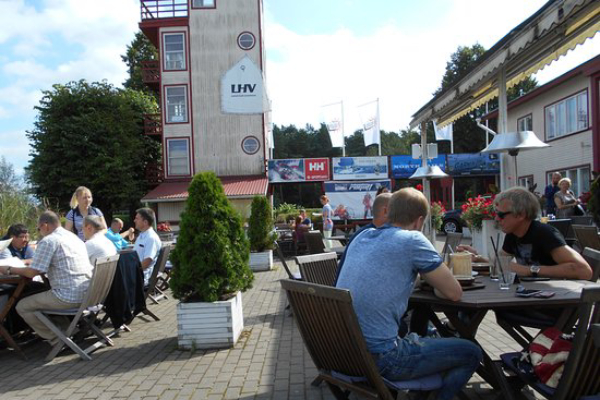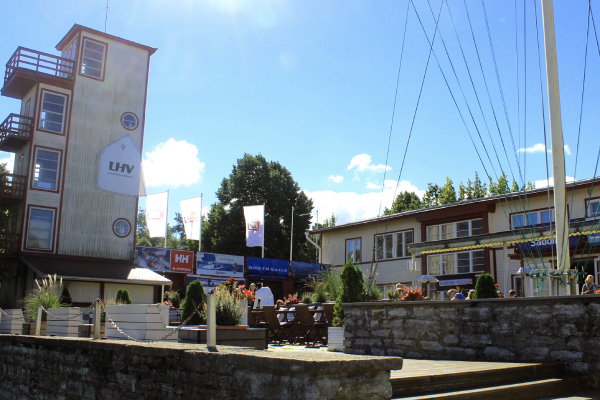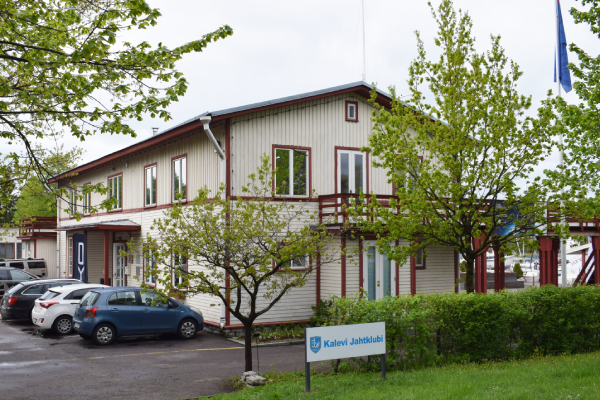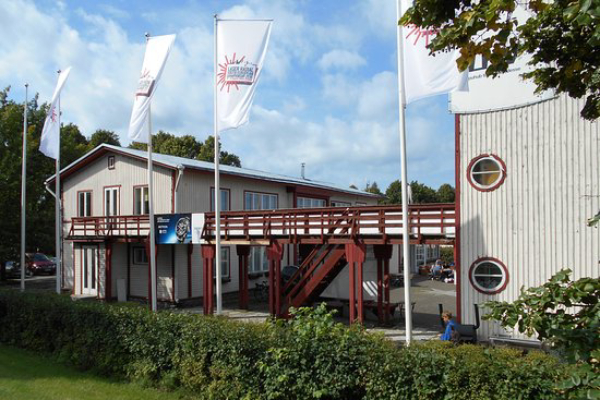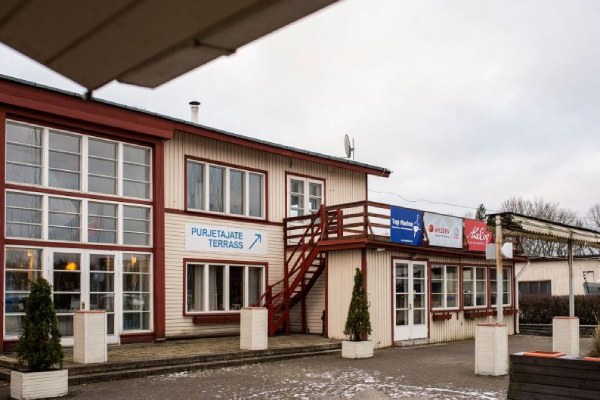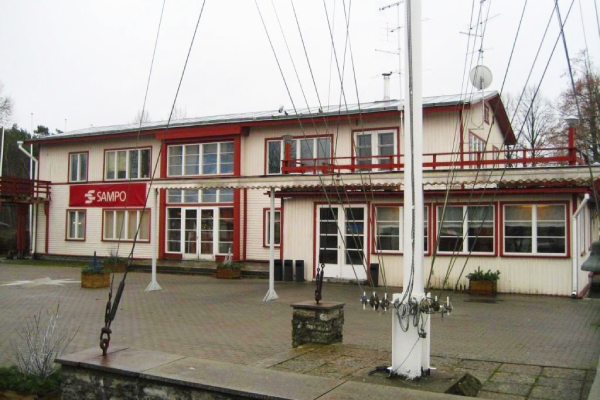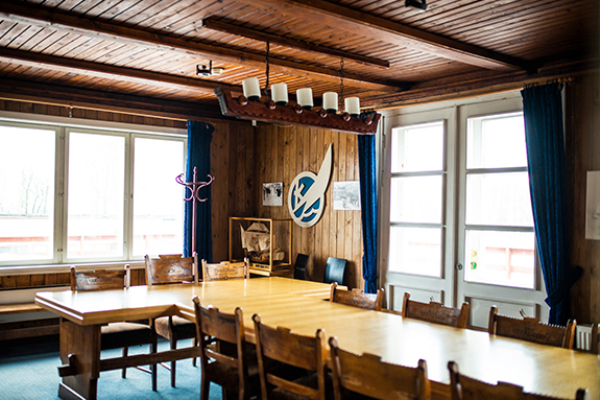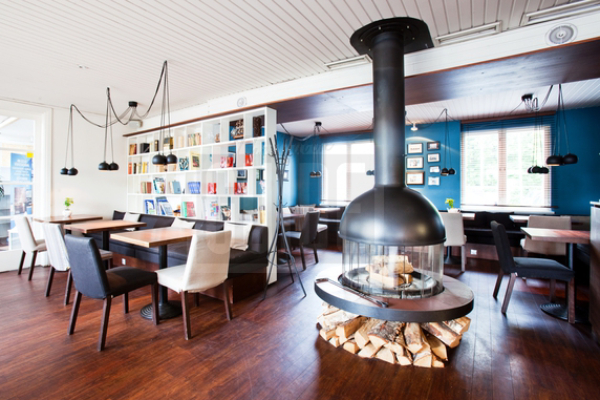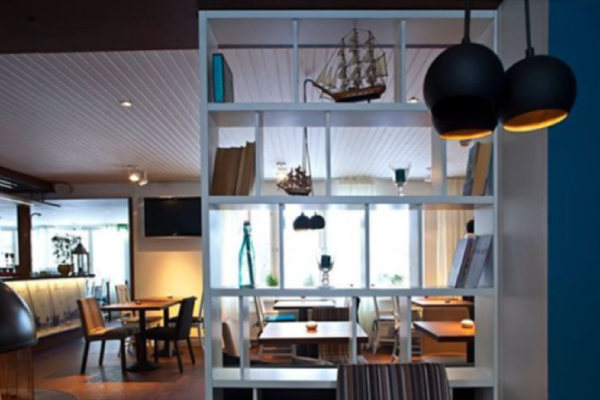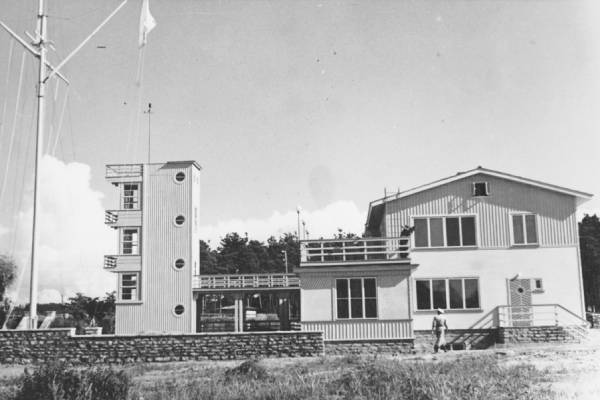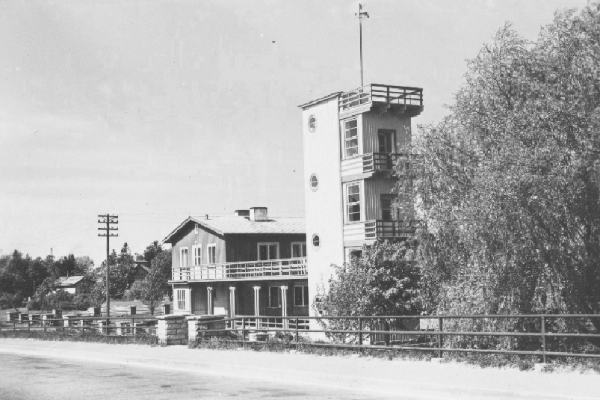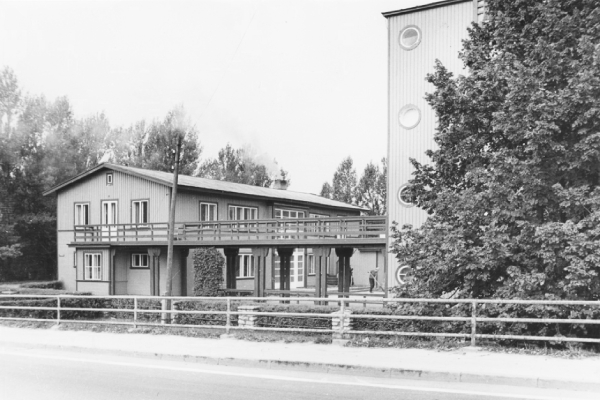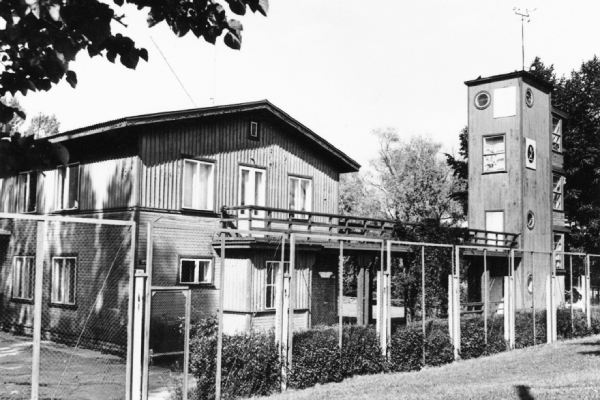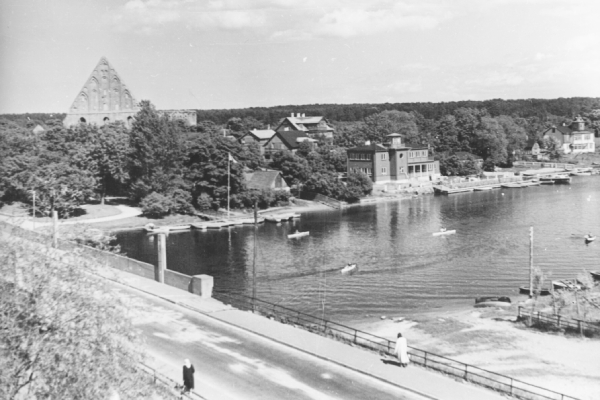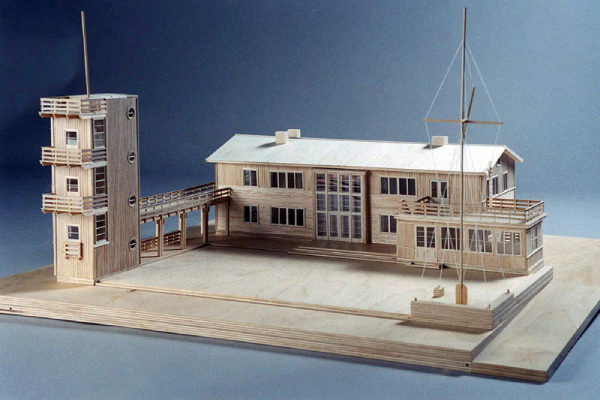Kalev Yacht Club in Pirita
Pirita tee 17, Tallinn
Pirita has been a popular summer resort for centuries. In particular, Pirita began to gain popularity in the 20th century. At the beginning of the year, construction began on the western bank of the Pirita River, where Karl Burman was built in 1911-12. The Kalev Community House, which was destroyed in World War II, was designed in the 1920s. Peeter Tarvas, in the “Estonian Project”, probably a collective, designed a new clubhouse – the Yacht Club – in 1949, commissioned by Kalev.
The main building of the yacht club is a two-story wooden house with a sled roof on the bank of the Pirita River, connected to the gallery by a three-story tower. There is also a large terrace on the riverside, which is bordered on the west by a low limestone wall. The building was one of the most modern in its time, built in a functionalist style, evidenced by round windows, clean wall surfaces and a modest décor of machine aesthetics. The yacht club was built at a time when the pre-Stalinist ambiguity in architecture remained, and architects had the opportunity to use in their projects the functionalism and representationalist traditions that gained popularity in Estonia, which became the subject of severe criticism a few years later. The windows of the tower are functionalistically designed with both ribbon and round illuminator windows. Among other things, the architect has taken the example of the much-acclaimed Pärnu Beach Hotel, which was completed a decade earlier. The layout of the building is asymmetric (due to the tower, porch, and gallery), but the layout of the rooms is largely symmetrical. The building is divided into two wings. The sea-wing has a club hall on the first floor with a veranda and kitchen, and a smaller meeting room on the second floor. Office, dressing, and club rooms are located on the first and second floor of Pirita Road. The main building has a low limestone plinth and a low sloping roof. On the eastern side of the plinth is a cornerstone with lettering – VSÜ Kalev Yacht Club. There are different floors on the board – on the ground floor and the upright table. The building is divided by doors and windows of different sizes. The gallery, which connects the two parts of the building, stands on the pillars emphasizing the airiness. The tower is accessible from the gallery and the side of Pirita Road. The main building is also decorated with a terrace and a balcony. An important element is a two-story lobby with a large window surface that overlooks the river. The original design has preserved a table with chairs, probably designed by Peeter Tarvas himself on the second floor. The original color scheme of the building provided a light-colored board on the ground floor and dark details on the upper floor (window frames, etc.). The interior has lost its original look over the years, but little has changed in appearance and volume.
1987 a. commissioned the Kalev Yacht Club, commodore Sven Kochberg, ordered a renovation project from a student design bureau newly created with the Estonian National Institute of Art. The project was carried out by the architect Enn Laansoo. the only member of the Bureau. Probably the reason why the project was commissioned from the student office was architect Peeter Tarvas, who was then vice-rector of the Art Institute and a supporter of the student’s bureau. During the extensive renovation of 1988-89, changes were made to the interior layout of the premises and a tower was built higher and supported by metal bearing structure. Interior designer Juta Lember was a member of the yacht club.
In the late 90s, Enn Laansoo, a member of the yacht club, volunteered to design a new storeroom building, which is built.

